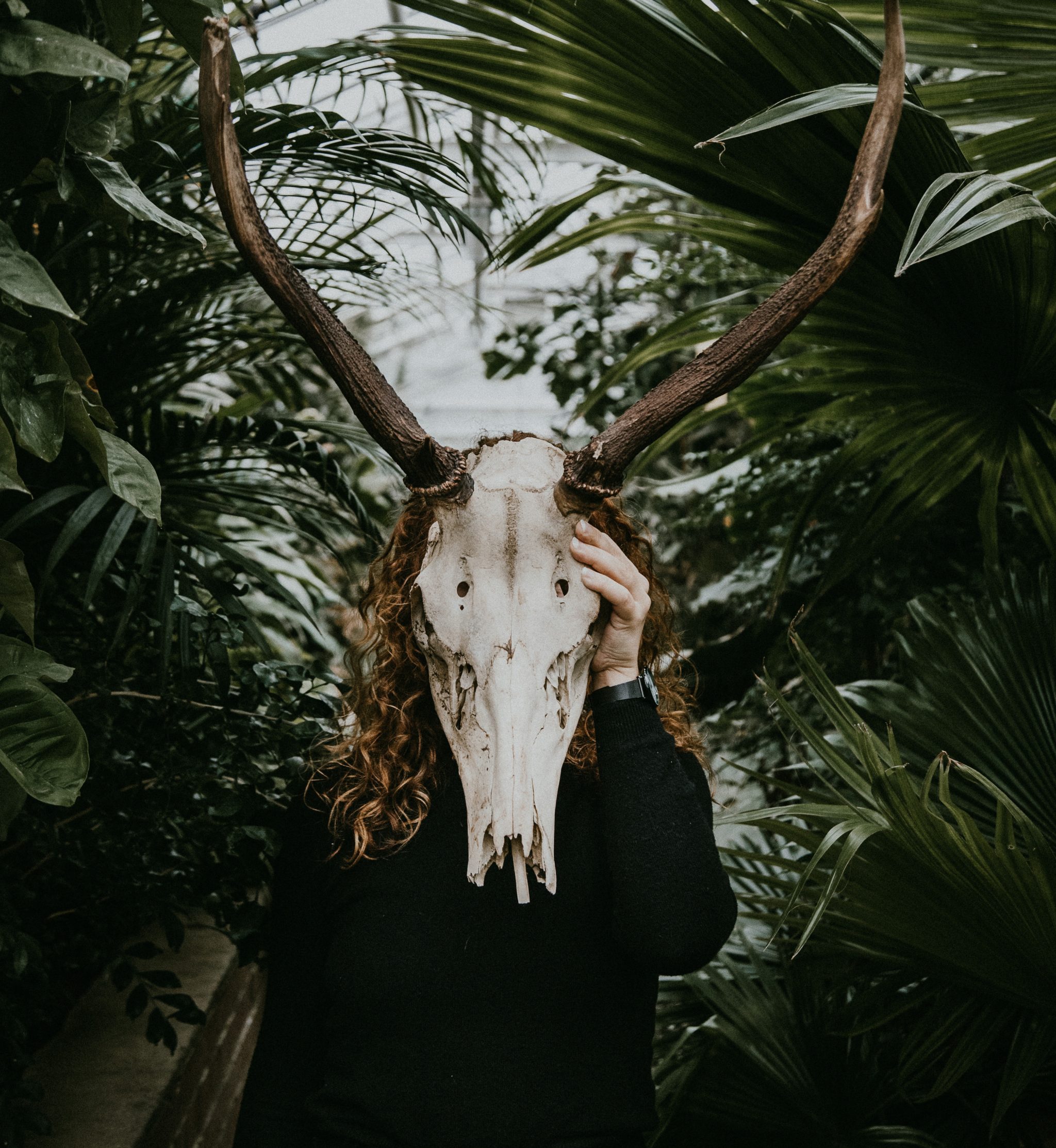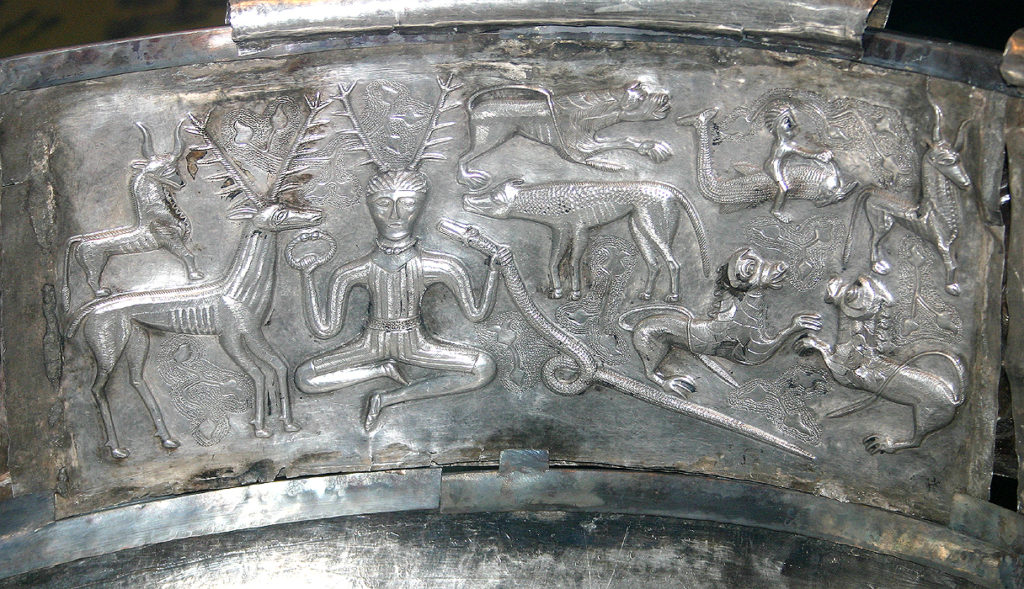
Colors: Green, Gold, Brown
Animals: Snake, Bull, Stag
Plants: Oak, Ivy, Mistletoe
Associations: Nature, Agriculture, Abundance, Fertility, Death and Rebirth
Related Gods/Goddesses: Herne the Hunter, Odin, Pan, Silvanus
Introduction
Cernunnos is generally depicted as a bearded man with deer antlers, holding a snake in one hand and a torc in the other. Cernunnos is associated with fertility, nature, and the life-death cycle. In some depictions, Cernunnos is shown with a purse full of gold. This is thought by some to be a metaphorical reference to knowledge or wisdom, not monetary wealth.
Little is known for sure about the role Cernunnos played historically or how he was worshiped.
History
The name Cernunnos itself comes from the Pillar of the Boatmen, thought to be carved by Gaulish sailors in 14 AD.
The best known depiction of Cernunnos is from the Gundestrup Cauldron discovered in Denmark, which has been dated to the La Tène period. In Commentarii de Bello Gallico, Julius Caesar compared Cernunnos to the Roman God of the underworld, Dīs Pater. This indicates that Cernunnos may have functioned as a Celtic psychopomp, though Caesar should generally be regarded as an unreliable narrator in regards to the Celts.

Introduction
Historically speaking, it is likely that Cernunnos was worshiped primarily in Gaul and the Iberian Peninsula. Over the course of time other horned gods that existed throughout Celtic territory were lumped together with Cernunnos or simply lost to time. Recent discoveries in England have lead some to believe that worship of Cernunnos continued into the late iron age, surviving Roman conquest.
Many have speculated that Cernunnos was the inspiration for the creation of Baphomet. The image of the devil may have been created in the image of Cernunnos and other horned gods in the region due to the prevalence of their worship.
In the modern day, Cernunnos plays an important role in traditions such as Wiccanism and Gardnerian witchcraft. Cernunnos is strongly associated with the festival of Beltane.
Building an Altar
Those who wish to build an altar to Cernunnos should reference the associations in the introduction of the article. Many Cernunnos altars incorporate a commercially available idol, of which there are many at reasonable prices. However, there are items that can be foraged for this purpose. Deer antlers are a common Cernunnos idol. One should use that which elicits the strongest emotional bond. Some have found that foraging works better for these purposes.
Meditation
There are few practices that better characterize the the nature of Cernunnos than a meditative walk in nature; particularly in old growth forests or nature separated from the hustle of daily life. When doing so one should attempt to clear their mind and attune their senses to all natural processes around them.
Feel your feet hug the ground beneath you. Feel the breath of the planet flow in and out of your lungs. Pay close attention to all the scents in the air. Listen to all the songs of nature while you wander. Do not be afraid to deviate from well worn paths.
At the end of this process, thank Cernunnos for protecting the wilds that you wander.
Ecology
Cernunnos is a god of abundance, healing, hunting, and the protection of nature. We can embody this by engaging in ecological restoration, growing medical plants, ecological activism, growing our own food, foraging, hunting, etc. There is no scale of food production that is irrelevant.
Conclusion
Cernunnos was one of the patron gods of the Celts. The forced transformation of him into the devil was fundamental to pushing the narrative of “civilization” and the detribalization of the Celts. Later, this void would give rise to ideologies that viewed nature simply as a resource to be extracted. Cernunnos is fundamental to the promulgation of a Neo-Celtic myth that seeks to transform the way humans engage with nature.
God of the green,
Lord of the forest,
I offer you my sacrifice.
I ask you for your blessing.You are the man in the trees,
the green man of the woods,
who brings life to the dawning spring.
You are the deer in rut,
mighty Horned One,
who roams the autumn woods,
the hunter circling round the oak,
the antlers of the wild stag,
and the lifeblood that spills upon
the ground each season.God of the green,
LearnReligions.org
Lord of the forest,
I offer you my sacrifice.
I ask you for your blessing.
Toutā Caillte is entirely funded by our readers. Please consider donating via my Patreon to fund future writing and ecological projects. Thanks!